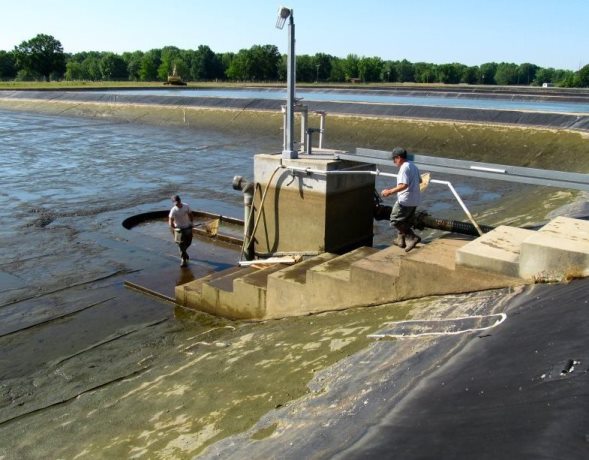
If you have questions about purchasing a license call 1-800-5GO-HUNT.
The Bob Tyler Fish Hatchery, formerly known as the North Mississippi Fish Hatchery, is located west of Enid Lake on 58 acres of land leased from the U.S. Army Corps of Engineers. It is easily accessible to locals and visitors from I-55.
Phase I construction, completed in 2006, includes a state-of-the-art hatchery building (tank room, wet lab, office, and staff rooms), a maintenance shop, 16 1-acre production ponds, a settling pond, and residence. Water is supplied by two ground water wells and a pipeline from Enid Lake. High quality water at a variety of temperatures for indoor and outdoor fish rearing is produced through a system of filters, heaters, chillers, and degassing chambers. The hatchery building houses 40 incubation jars and 36 holding/rearing tanks. In addition to the production ponds, there are two 80-ft outdoor raceways.
The hatchery is located below Enid Dam in Yalobusha County, Exit 233 off of I-55. (Note: GPS will not locate the address.) You can send mail to the hatchery at Bob Tyler Fish Hatchery and Visitor Education Center, P.O. Box 100, 457 CR 36, Enid, Mississippi 38927.

The hatchery produces cool and warm-water species including: northern largemouth bass, southern walleye, (yes, we have walleye in Mississippi), paddlefish, alligator gar, white crappie, black crappie, Magnolia crappie, bluegill, and redear sunfish. Spawning usually begins in March and runs through June. Most of the brood fish are held in 1-acre ponds year-around though some, like flathead catfish and walleye, are collected from local reservoirs. The incubation jars, raceways, and rearing ponds hold fry and fingerlings from March through November.
Once eggs hatch inside the incubation jars, the fry (newly hatched fish) are placed into the production ponds. These fish grow in the ponds until the fall, when water temperatures cool. These "fingerlings" are then harvested and stocked into public waters. Visitors may view spawning activities from the observation area in the hatchery building.
The Visitor Education Center (VEC) at the Bob Tyler Fish Hatchery in Enid provides an educational, entertaining experience that promotes freshwater fishing and encourages conservation and stewardship of aquatic resources.
The Magnolia crappie is a triploid hybrid cross between a black-striped black crappie (a scarce color variation of the black crappie) and a white crappie. This fish has a black stripe running from the front of the dorsal fin along the top of the body, normally extending to the upper jaw.
The eggs and milt are stripped and hand mixed, then the eggs are placed in a pressure chamber, causing triploidy--the development of three sets of chromosomes. The resulting fish is sterile because it has three sets of chromosomes. Because they can't reproduce, they have been stocked into some smaller water bodies like Lake Charlie Capps where fertile crappie would overproduce and few would grow to a harvestable size due to a lack of enough food.
Dennis Riecke, MDWFP Fisheries Biologist
No. Trout are not native to Mississippi. Trout stocked into private ponds provide a seasonal fishery during the winter months. A state record rainbow trout is acknowledged, but this fish crossed the Mississippi River from Arkansas during drought conditions, into Lake Whittington.
No. Everything, we raise at the Bob Tyler Fish Hatchery is for public stocking only. For information on stocking, see information compiled by the MDWFP and Mississippi State University Extension Service.
Hatchery Office: (662) 563-0542
Visitor Education Center: (662) 563-8068